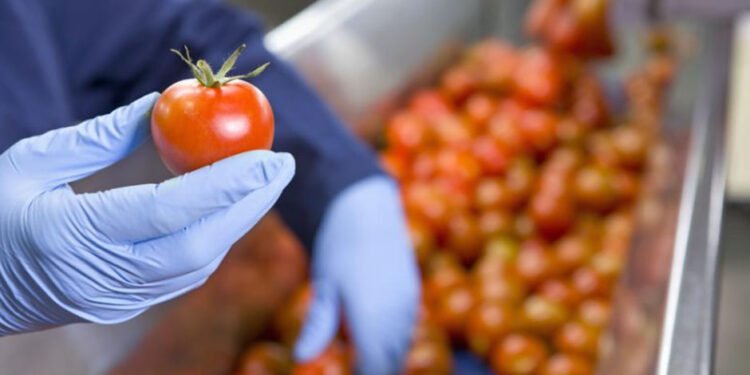Transparency in the food supply chain is no longer a luxury; it is a necessity. As consumers become more conscious of where their food comes from, businesses across the industry must prioritize openness and accountability. Transparency helps build consumer trust, ensures food safety, supports sustainability, and enhances overall operational efficiency. In this blog, we will explore why transparency in the food supply chain is essential and how it benefits businesses, consumers, and the environment.
Understanding the Food Supply Chain
The food supply chain encompasses all the stages involved in food production and distribution, including farming, processing, packaging, transportation, storage, retail, and consumption. Each step plays a critical role in ensuring that food products meet safety and quality standards before reaching consumers. However, with numerous intermediaries involved, there is ample room for opacity, which can lead to food fraud, contamination, and unethical practices.
Building Consumer Trust
Consumers today demand more information about their food, from ingredient sourcing to farming practices. According to a study by the Food Marketing Institute, 75% of consumers are more likely to purchase from brands that provide detailed sourcing and ingredient information. Transparency in the food supply chain reassures consumers that the food they are purchasing is safe, ethically produced, and of high quality. When companies openly share details about sourcing and processing, they cultivate brand loyalty and customer confidence.
Ensuring Food Safety
One of the most compelling reasons for transparency in the food supply chain is food safety. Contaminated or mislabeled food products can lead to severe health consequences, including foodborne illnesses and allergic reactions. When supply chains are transparent, it becomes easier to trace the origin of contaminated products, allowing for swift recalls and minimizing risks to public health. Regulatory bodies, such as the Food and Drug Administration (FDA) and the U.S. Department of Agriculture (USDA), enforce strict guidelines that require companies to maintain transparency to uphold food safety standards.
Combating Food Fraud
Food fraud is a growing global concern, involving the intentional misrepresentation of food products for economic gain. Common examples include mislabeling products, diluting ingredients, and substituting high-value components with lower-quality alternatives. A transparent food supply chain helps prevent fraudulent practices by allowing stakeholders to verify the authenticity of food products. Technologies like blockchain and digital tracking systems enable real-time monitoring of products as they move through the supply chain, reducing the likelihood of deception.
Supporting Ethical and Sustainable Practices
Consumers are increasingly interested in ethical and sustainable food production practices. Transparency in the food supply chain encourages responsible sourcing, fair labor practices, and environmental stewardship. Companies that disclose their sourcing policies, fair trade certifications, and sustainability initiatives gain a competitive edge. Additionally, transparency fosters accountability among food producers, ensuring they adhere to environmentally friendly practices such as reducing carbon footprints, minimizing food waste, and conserving natural resources.
Enhancing Operational Efficiency
Transparent supply chains allow businesses to identify inefficiencies and streamline their operations. By utilizing data-driven insights, companies can optimize inventory management, reduce waste, and improve production forecasting. Real-time tracking and traceability systems enable businesses to monitor product movement, ensuring timely deliveries and reducing spoilage. Improved efficiency ultimately translates to cost savings, making transparency a financially sound investment for food businesses.
Meeting Regulatory and Compliance Standards
Governments and regulatory bodies worldwide are enforcing stricter guidelines to improve food safety and transparency. Regulations such as the Food Safety Modernization Act (FSMA) in the U.S. and the European Union’s General Food Law require businesses to maintain accurate records and provide clear traceability. Non-compliance can result in legal penalties, product recalls, and reputational damage. Companies that prioritize transparency not only comply with regulations but also enhance their credibility in the marketplace.
Leveraging Technology for Transparency
Technology plays a crucial role in enhancing transparency within the food supply chain. The following innovations are revolutionizing how businesses track and share information:
- Blockchain Technology – Blockchain enables secure, tamper-proof record-keeping, allowing all stakeholders to access real-time data on food products from farm to table.
- RFID and IoT Sensors – These technologies provide real-time monitoring of food products, ensuring proper storage conditions and reducing losses due to spoilage.
- AI and Data Analytics – Artificial intelligence helps predict demand, optimize supply chain logistics, and identify potential risks before they escalate.
- QR Codes and Mobile Apps – Companies are using QR codes on packaging to allow consumers to trace product origins, ingredient sourcing, and sustainability efforts with a simple scan.
Challenges to Achieving Transparency
Despite its benefits, achieving full transparency in the food supply chain comes with challenges. Some of the key obstacles include:
- Cost of Implementation – Investing in new technology and tracking systems can be costly, especially for small and medium-sized businesses.
- Complexity of Supply Chains – With multiple intermediaries involved, ensuring end-to-end transparency can be challenging.
- Data Security Concerns – As more data is collected and shared, businesses must address cybersecurity risks to protect sensitive information.
- Resistance to Change – Some companies may be reluctant to share proprietary information due to competitive concerns or fear of exposing inefficiencies.
The Future of Transparent Food Supply Chains
The demand for transparency in the food supply chain is only expected to grow. As consumers become more informed and regulatory frameworks evolve, businesses must adapt to stay competitive. Companies that proactively implement transparency measures will gain consumer trust, reduce risks, and enhance overall efficiency.
Collaboration among food producers, suppliers, retailers, and regulatory bodies will be key to overcoming challenges and driving industry-wide improvements. By embracing technological advancements and fostering a culture of openness, the food industry can ensure a safer, more ethical, and sustainable future.
Conclusion
Transparency in the food supply chain is not just a trend—it is a fundamental requirement for modern food production and distribution. From ensuring food safety to combating fraud, promoting sustainability, and improving efficiency, transparency offers a multitude of benefits. As consumers continue to demand more accountability, businesses that prioritize openness will set themselves apart in the marketplace. Investing in transparency today will pave the way for a more trustworthy and resilient food industry tomorrow.












